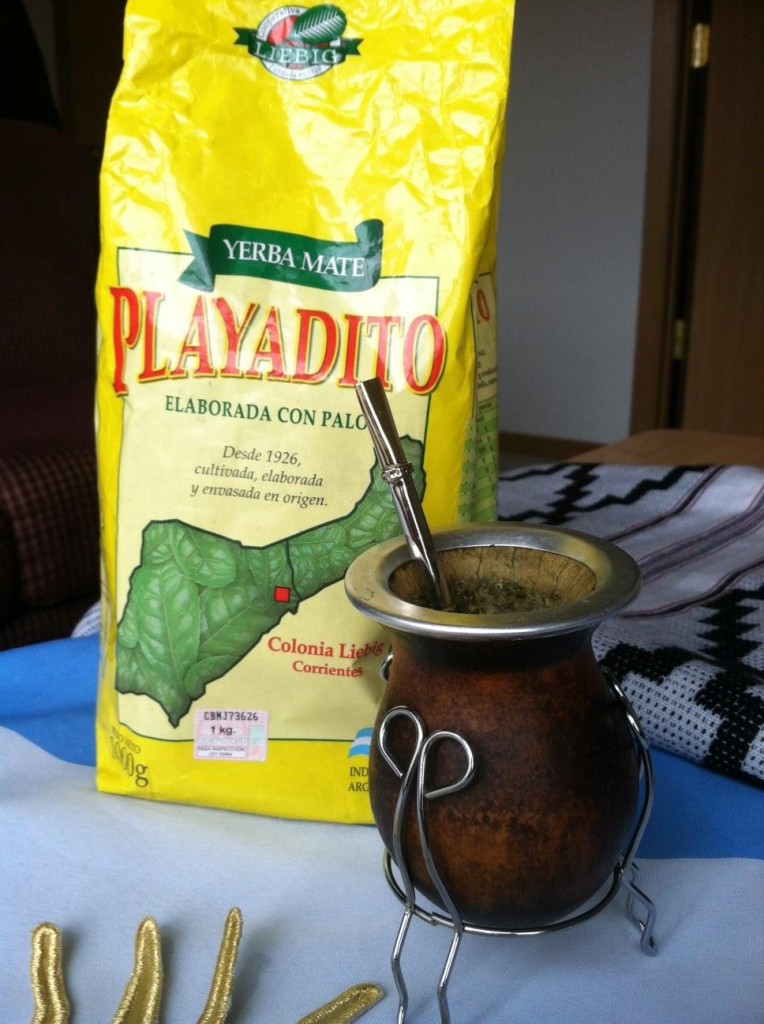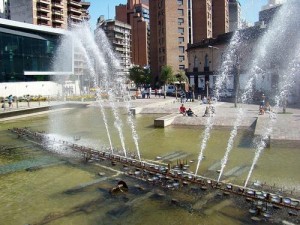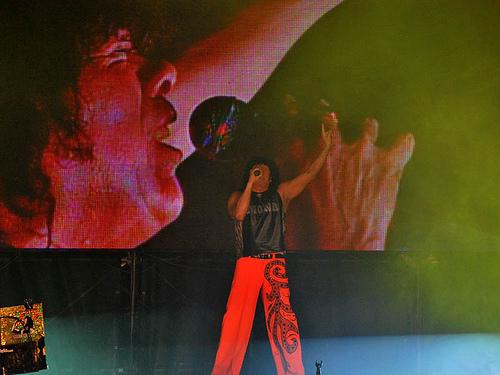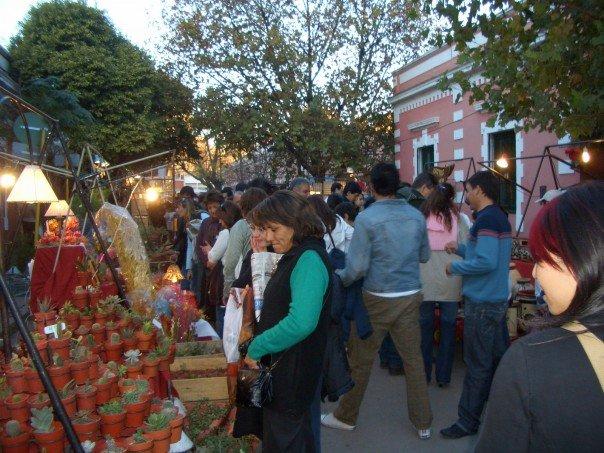 The fourth installment in the How to Meet People Abroad series comes from Melibee’s Carrie Niesen, who worked at a nonprofit organization focused on social justice issues in Córdoba, Argentina.
The fourth installment in the How to Meet People Abroad series comes from Melibee’s Carrie Niesen, who worked at a nonprofit organization focused on social justice issues in Córdoba, Argentina.
Over the course of our How to Meet People Abroad series, we’ve taken you to the England to break through a Londoner’s compartments, to Central America to try out your Spanish skills while connecting with the locals in the small town of Lake Yojoa, Honduras, then back to Europe to learn how to avoid making a silly mistake in Dublin. Today, our tour stops in South America to help you find your place in the community in Córdoba, Argentina. Córdoba is both a province and a city, and this post highlights how to meet locals in the city, Córdoba Capital.
Córdoba, the second largest city in Argentina with about 1.3 million people, is smack dab in the middle of the country and is vibrant cultural center. By sleeper bus, it’s about an eight hour ride from Buenos Aires (and a comfortable one at that!). While people in Argentina are very friendly and open to foreigners, I would strongly recommend making a social connection with a local before you go. If you’re going to study Spanish, ask your university or provider for an intercambio (language exchange partner) for an easy social ‘in’. Before I went, a college classmate of mine connected me with his family, so I met his sister and her friends when I was in country. I got even luckier still–I became very close with my co-workers and they introduced me to their friends! I never thought I’d be singing Argentine karaoke at a birthday party and learning the proper way to make chimichurri (typical meat, bread, chicken, tastes-great-on-anything sauce made with herbs, spices, and olive oil) at my farewell celebration with my co-workers. So once you have one connection, you’ll have many! Argentines enjoy meeting new people and are open to foreigners. Know that being approachable by smiling, being aware of your body language, walking with purpose, and greeting store owners all go a long way. Just as there are many Argentines more than willing to get to know you, there are equally as many that want to take advantage of you, too. It doesn’t mean you have to be on edge and assume people are out to ‘get you’, but use good common sense and trust your gut.
Once you have your social ‘in’, it’ll be far easier to make connections and adopt el acento cordobés (a Cordobese accent), fooling locals that you’ve been around longer than they think! Try out these five tips I offer from my experience as a temporary cordobesa with your new circle of friends to make the most of connecting with others.
1. Mate. I would be remiss to talk about anything related to Argentina and not mention mate. With the connection you make before you go, chances are the first thing you do with that contact is chat over mate. Even though it’s a typical Argentine staple, it’s most popular in Córdoba. Porteños (folks in Buenos Aires) typically catch up with friends over coffee or a beer, and cordobeses prefer mate. You will see folks mateando in parks, plazas, cafés, taking a leisurely stroll around the city, at home, at parties…you name it. Cordobeses love, love, love their mate and they take their mate essentials with them wherever they go. Mate, simply put, is a tea. However, it’s much more than that to Argentines. To matear is to connect, talk, share, laugh, joke, and enjoy the company of friends and family while sharing a beverage together…literally. Everyone participating in the mate experience drinks out of the same cup (typically out of a hollowed out gourd) with the same metal straw (called a bombilla). One person sets up the mate (called el cebador) by placing the straw in the gourd, adding the mate, filling it with water, and testing to see if it’s ready to be enjoyed by fellow mate mates. The cebador makes sure to refill the gourd with water from a thermos when it runs out. Depending on yours and the group’s taste, you can add honey or sugar to take it dulce (sweet), or go the traditional route and enjoy it amargo (unsweetened, bitter). However, be mindful of good mate etiquette: don’t slurp, pass it to the next person after a few sips, don’t stir it, and never touch the end of the metal straw. If you hang on to it for too long, someone may ask, “Are you teaching it to speak?” to poke fun at the fact that you’ve had it for too long!
2. El Paseo de Buen Pastor. Once you’ve mastered your mate technique, a fantastic place for people of all ages to matear is El Paseo de Buen Pastor. What used to be a women’s prison is now a place of cultural connection in the heart of downtown. It’s two blocks from the megamall Patio Olmos on Avenida Hipólito Yrigoyen in the Nueva Córdoba  neighborhood and it’s a similar concept to plazas in Spain. Here, you’ll not only find folks mateando, but you might be able to catch an outdoor concert, an art show, book readings, dance/theater performances, and much more. This is a great place to strike up conversations—ask about what’s happening for the night, what people are up to, where the hot spots are for the night, etc. You’ll find club promoters here as well passing out flyers on the top nightly deals. They could very well direct you to one of these boliches (night clubs) in La Zona Cerro de las Rosas. Don’t be shy! People expect to chat there. If you’re the planning type, you can review their schedule of events on their Facebook page. Otherwise, in true Latino style, the spontaneity of conversation could lead you to some great connections with not only people, but things going on in the city. (Photo credit: flickr, Pablo Flores)
neighborhood and it’s a similar concept to plazas in Spain. Here, you’ll not only find folks mateando, but you might be able to catch an outdoor concert, an art show, book readings, dance/theater performances, and much more. This is a great place to strike up conversations—ask about what’s happening for the night, what people are up to, where the hot spots are for the night, etc. You’ll find club promoters here as well passing out flyers on the top nightly deals. They could very well direct you to one of these boliches (night clubs) in La Zona Cerro de las Rosas. Don’t be shy! People expect to chat there. If you’re the planning type, you can review their schedule of events on their Facebook page. Otherwise, in true Latino style, the spontaneity of conversation could lead you to some great connections with not only people, but things going on in the city. (Photo credit: flickr, Pablo Flores)
3. Ciudad Universitaria. Not too far from El Paseo de Buen Pastor is an area called Ciudad Universitaria. This is where you’ll find the National University of Córdoba, the second largest university in Argentina where over 107,000 students are pursuing 250+ types of degrees. Since the surrounding campus area is so large, it’s often considered its own city, hence its namesake translating to ‘University City’. Most of the students live in the next neighborhood over, Nueva Córdoba. This neighborhood is chock full of things to do and explore, including over 16 museums, 25 libraries, and two planetariums to tap into your intellectual side, as well as trendy bars, cute boutiques, and fantastic restaurants to appease your social side. Take a day to explore this area, and don’t hesitate to stop passersby and ask a question. Argentines love to talk and give advice, so ask them for directions or ask about what they would recommend to do that night. Parque Sarmiento is also in this area, which includes a zoo, man-made lake, and a flower garden.
4. Cuarteto. Cuarteto (meaning quartet) is a musical genre born right in Córdoba, and going to a baile, a cuarteto concert, is a great place to mingle and meet locals. Córdoba’s cultural identity would be incomplete without mention of the passion and deep pride for cuarteto. Originally just piano, accordion, bass, and violin, it now  sometimes includes percussion and brass instruments. It’s similar to merengue with its fast, uplifting beat, but the lyrics set it apart. Merengue typically has repetitive lyrics, whereas cuarteto songs weave stories about love, heartache, passion, betrayal, or even simply about who drank the last of the wine. One of the most popular artists that appeals to all ages is Carlos ‘La Mona’ Jiménez. Just as Michael Jordan is to basketball, La Mona Jiménez is to cuarteto. Bailes are typically well attended and are not for the faint of heart—you’ll find 8,000-12,000 people at each one! These are every Friday, every Saturday, and every Sunday…and you don’t just go to listen to music, but you dance, enjoy the typical drink, fernet con Coca (Coke mixed with Argentina’s staple liquor akin to black licorice), and chat. If you’re pressed for conversation topics, ask someone to show you the dance for ‘Quien Ha Tomado Todo El Vino?’! (Photo credit: flickr, Damian Zanini)
sometimes includes percussion and brass instruments. It’s similar to merengue with its fast, uplifting beat, but the lyrics set it apart. Merengue typically has repetitive lyrics, whereas cuarteto songs weave stories about love, heartache, passion, betrayal, or even simply about who drank the last of the wine. One of the most popular artists that appeals to all ages is Carlos ‘La Mona’ Jiménez. Just as Michael Jordan is to basketball, La Mona Jiménez is to cuarteto. Bailes are typically well attended and are not for the faint of heart—you’ll find 8,000-12,000 people at each one! These are every Friday, every Saturday, and every Sunday…and you don’t just go to listen to music, but you dance, enjoy the typical drink, fernet con Coca (Coke mixed with Argentina’s staple liquor akin to black licorice), and chat. If you’re pressed for conversation topics, ask someone to show you the dance for ‘Quien Ha Tomado Todo El Vino?’! (Photo credit: flickr, Damian Zanini)
5. Paseo de las Artes. You’ve hit the jackpot with this place if you love food, people, art, and great conversation! Literally translating to ‘A Stroll with the Arts’, it’s an excellent way to take your time checking out the gamut of goodies ranging from sweaters, shoes, jewelry boxes, paintings, earrings/necklaces/bracelets, weavings, baskets, plants, caricatures, antiques…you name it! I was lucky to live a mere two blocks from the Paseo in Nueva Córdoba. My host mom, Patricia, is a prominent painter in the community and encouraged me to spend multiple evenings walking through the numbers upon numbers of merchants displaying and selling their work. Her suggestion certainly didn’t disappoint and I spent many evenings taking advantage of such a wonderful  market! If it’s handcrafted and well made, you’ll find it here. The Paseo has been part of Córdoba’s Saturday and Sunday lineup of activities since 1981 and you’ll soon discover one evening isn’t enough to peruse over 300 artists’ work. A typical paseo includes a leisurely stroll, perhaps an empanada (stuffed savory pastry with cheese and meat) for a snack, and maybe even ending with a copa (drink) to replenish after an evening of supporting Córdoba’s local economy. You can find out about its upcoming events, view photos of artists’ work, and more on their Facebook page. (Photo credit: Sarah Kelly)
market! If it’s handcrafted and well made, you’ll find it here. The Paseo has been part of Córdoba’s Saturday and Sunday lineup of activities since 1981 and you’ll soon discover one evening isn’t enough to peruse over 300 artists’ work. A typical paseo includes a leisurely stroll, perhaps an empanada (stuffed savory pastry with cheese and meat) for a snack, and maybe even ending with a copa (drink) to replenish after an evening of supporting Córdoba’s local economy. You can find out about its upcoming events, view photos of artists’ work, and more on their Facebook page. (Photo credit: Sarah Kelly)
As you can see, community, friendship, and gathering with others are key components of Argentine culture. Argentines are far from shy! They want to engage with you, get to know the real you (and not just what you do for a living!), and teach you about Córdoba and Argentina. If you do find yourself alone as I did when touring Buenos Aires, look for other tourists. A simple, “Would you mind taking my picture?” sparked a friendship with two porteños that I’m still in touch with to this day. Be observant of your surroundings, don’t be flashy with your gadgets and fancy jewelry, but don’t be shy to reach out, either—you may never know what types of connections you’ll make!
Special thanks to local cordobeses, Paul Carpintero and Jonathan Molina, for their insights on this post.
 About the Author: Carrie Niesen is a communication studies instructor by day and a Melibee hive member by night. Armed with a master’s degree in intercultural communication, Carrie is an adamant international education advocate and is insatiably curious about the world. She is a Spanish speaker, adorer of Spanish dialects, and will always have a space in her heart for Argentina.
About the Author: Carrie Niesen is a communication studies instructor by day and a Melibee hive member by night. Armed with a master’s degree in intercultural communication, Carrie is an adamant international education advocate and is insatiably curious about the world. She is a Spanish speaker, adorer of Spanish dialects, and will always have a space in her heart for Argentina.

